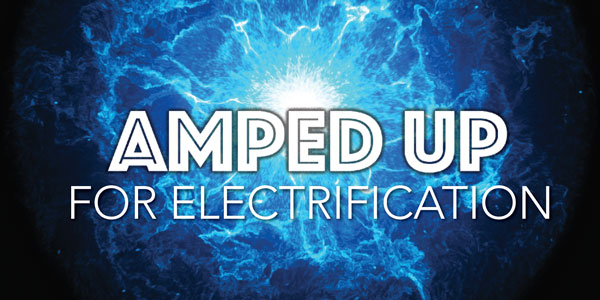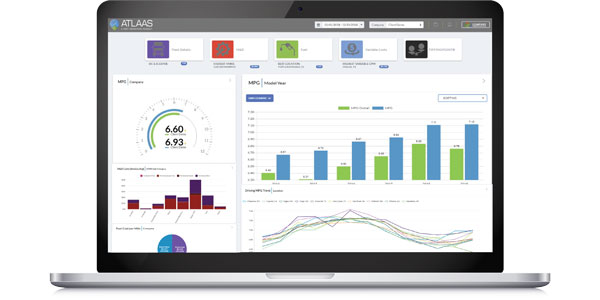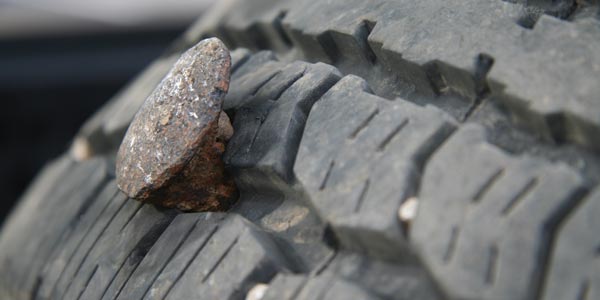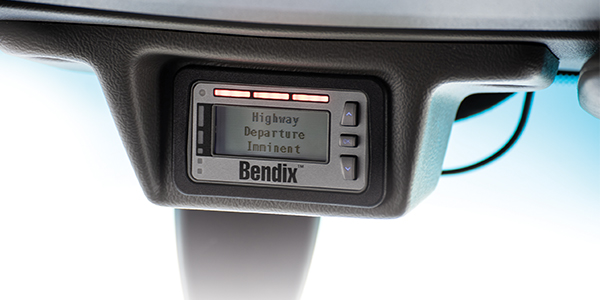“We work with OEMs to make sure axles are designed and configured to fit each vehicle configuration,” says Steve Slesinski, director of product planning, Dana Commercial Vehicle Systems. “That way, our fleet customers can be confident that their axles are engineered to perform effectively and efficiently.”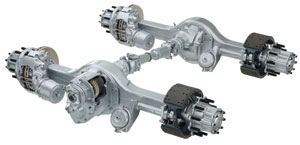
When spec’ing drive and trailer axles, fleet managers may hear about “dressed axles,” a term which refers to axles complete with braking system and wheel-end components. Often included are hubs (including bearings, wheel seals, spindle nuts and lubricant) foundation brakes with drums or rotors, parking brake chambers, automatic slack adjusters, and ABS tone rings and sensors, and in some cases suspension brackets.
“The dressing of axles for Class 8 customers is still under the specification of the OEM,” says Santiago Salazar, senior director of product strategy at ArvinMeritor. “Is the installed quality better with a dressed axle? The key is to have a quality assembly process and system. If this is in place, the installed quality will be similar regardless of assembly location. It can come down to who can perform the OEM’s requirements more consistently and at the lowest cost, the axle supplier or the internal workforce at the assembly line.
“For a supplier to dress an axle for an OEM, the truck manufacturer would first have to define the components in the fleet’s specifications,” Salazar continues. “Unless a customer specifically asks the OEM to create a dressed axle version to meet a service requirement, a dressed spec wouldn’t exist with the axle supplier. What we supply is only what the OEM asks us to build.”
Same result
Fleets do not usually specify “dressed” axles because the end result is usually the same whether the axle is delivered dressed by its manufacturer or built by the OEM, notes Dana’s Slesinski. “OEMs drive the decision relative to their manufacturing processes and the type of axle needed. For most fleets, a dressed axle is identical regardless. For unique applications, though, an OEM may choose to order a dressed axle to meet a specific design, one with certain hubs, brakes and other wheel-end components.”
OEMs historically have not directly requested or preferred dressed axles, according to the manufacturers, because most have trained people available on their assembly lines for dressing non-dressed axles.
“Higher volume OEMs,” Slesinski says, “usually only request dressed specialty axles that are not the same as those in their high volume manufacturing processes. Smaller truck builders may prefer to have dressed axles because non-dressed axles are not conducive to ease of vehicle assembly in their operations.”
“Primarily,” adds ArvinMeritor’s Salazar, “medium to smaller sized OEMs prefer to buy dressed axles because their volumes don’t support having an assembly station internally to dress axles. They prefer to buy finished product that they can more readily drop into their vehicles without a lot of preparation work required. Larger OEMs who have higher volumes with more complex build configurations and more variation find it more difficult to bring in fully dressed axles because of scheduling complexity. They require the flexibility to be able to assemble the specific configuration they require on site.”
Aftermarket considerations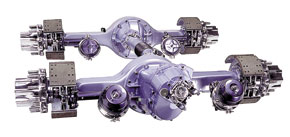
Dressed axles are also a consideration in the aftermarket. Manufacturers do offer dressed and undressed drive and trailer axles for replacement as well individual parts and components, such as gear sets, wheel bearings, etc. However, while a fleet may buy a dressed axle in the aftermarket, the supplier may not know the exact specifications installed by the vehicle OEM, and no complete axle is sold as original equipment or in the aftermarket without an application approval.
“There are clearly pros and cons to dressed axles as original equipment or in the aftermarket,” says Dana’s Slesinski. “One benefit, regardless of the source, is that fleets have one place to turn for support and as a preferred source for service, whether it is back to the OEM through a truck or trailer dealer or to the axle supplier directly.”
ArvinMeritor’s Salazar also points out that while there is no difference between how fleets maintain axles whether they are dressed by an OEM or an axle supplier, or purchased as original equipment or on the aftermarket, there are questions about reliability. “For example,” he says, “warranty costs can often be better defined with dressed axles since wheel-end assembly issues then become the responsibility of axle suppliers, who would and could address any performance issues quickly.”
Choosing the correct lubricant
“In today’s trucking industry more and more vehicles are being asked to operate efficiently over longer periods of time and significantly more miles than what was expected only a few years ago,” says Rick Muth, lubricants manager at Eaton Corporation and Roadranger Marketing. “One of the best value investments a fleet can make to successfully tackle these new challenges is the selection of proper lubricants.
“The only proper lube is an approved lube,” Muth continues. “Only an approved lube, regardless of supplier, is going to ensure that critical properties such as oxidation stability and shear stability – key performance criteria that separate an approved lube from a non-approved lube – are up to the challenge.”
The ultimate consequence to using non-approved lubricants, Muth notes, is complete component failure. At the same time, this practice can contribute to less than optimum vehicle performance and increased component wear. In addition, proper lubricants must be used to take advantage of extended warranties and extended drain intervals.
“With most North American lube distributors having a wide portfolio of products, many fleets are not even aware of the fact that they may be using inferior lubricants,” Muth states. “The question is: With so many lubricant choices available, how does a fleet differentiate an approved lubricant from a non-approved lubricant?”
The answer, according to Muth, is that performance specifications for lubricants are well documented by drivetrain component suppliers. Additionally, OEMs are adhering to these standards with 80 percent of Class 8 vehicles currently being filled with approved, extended-drain lubricants.
“With OEMs willing to make the investment in a quality lubricant, chiefly because the risk of component failure is too great,” Muth concludes, “it should naturally follow that fleets make the same investment.”










